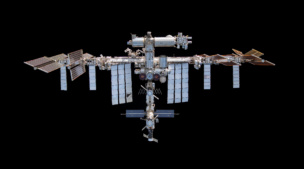The Pentagon is ready and willing to target adversaries’ space assets if conflict spills over into the domain according to an unclassified policy report submitted yesterday to Congress.
The report, entitled “Space Policy Review and Strategy on Protection of Satellites,” outlines the Pentagon’s preparations to defend its space assets from attack if war breaks out in space. The 2022 and 2023 National Defense Authorization Acts (NDAA) mandated the review of the US space policy and the report.
“It’s the clearest and most comprehensive unclassified articulation yet of our approach to protecting national security interests in space,” DoD Assistant Secretary for Space Policy John Plumb said in a press briefing, also noting that releasing the report in an unclassified format is “a key step towards normalizing space as an operational domain.”
A position of strength: The report identifies China as the strongest adversary and risk to US operations in space, followed by Russia. Both nations have extensive counterspace capabilities, including direct-ascent anti-satellite (ASAT) weapons and jamming technology.
When it comes down to it, the report states, “DoD will leverage a breadth of options across all operational domains to deter aggression and, if deterrence fails, to prevail in conflict.”
Resilient and distributed: The resilience of satellite systems is top of mind for the DoD as it builds its new space architecture.
- “We’ve come a long way in how we’re approaching resilience,” Plumb said on the call. “It’s baked into all of our conversations. And it’s not just satellites, it’s also the ground architecture.”
- To build resilient systems, the DoD is pursuing a number of approaches, including proliferated architectures, diverse approaches to reach similar results, and deception of adversaries as to the nature and location of space assets.
Staying alert: Space situational awareness also makes the list of the US military’s priorities in space.
“In an increasingly dynamic and congested space domain, SDA requires an integrated sensor system that leverages DoD, other US government, and international and commercial partner services,” the report states. “Providing space operators with relevant, timely data can help to prevent operational surprise and support efforts to protect and defend space assets.”




